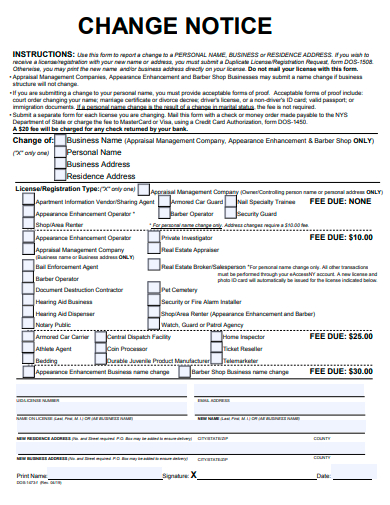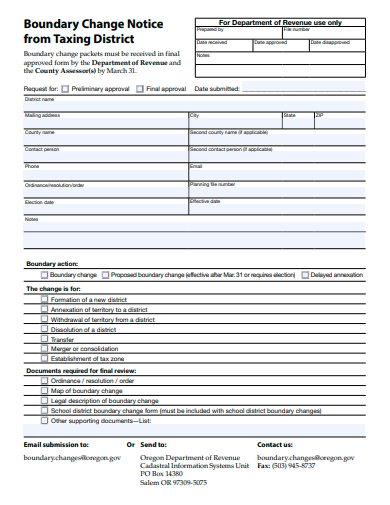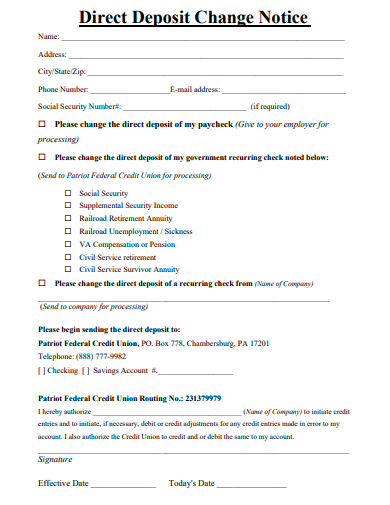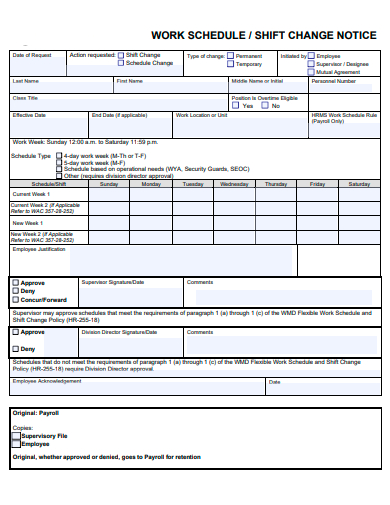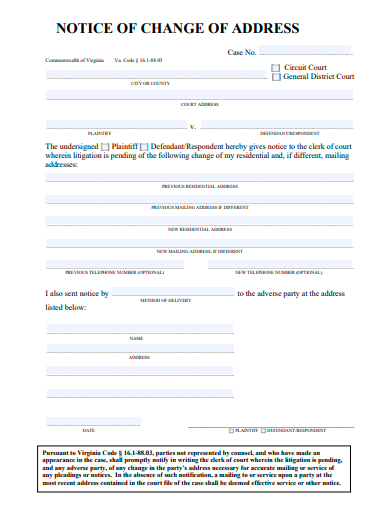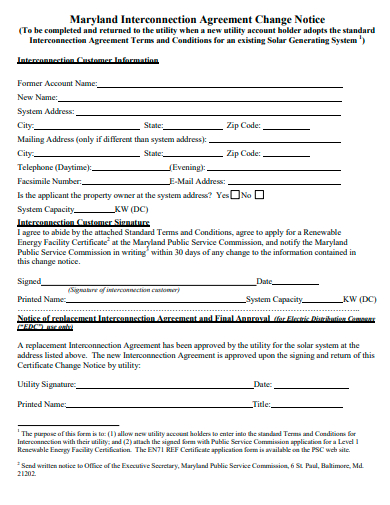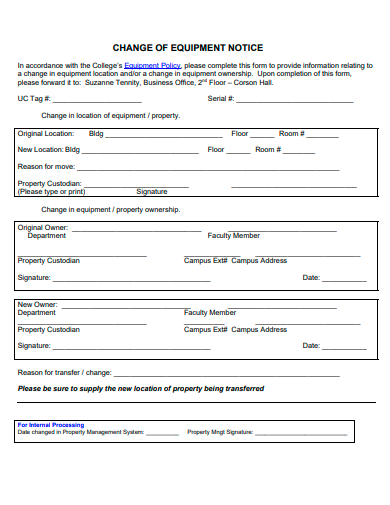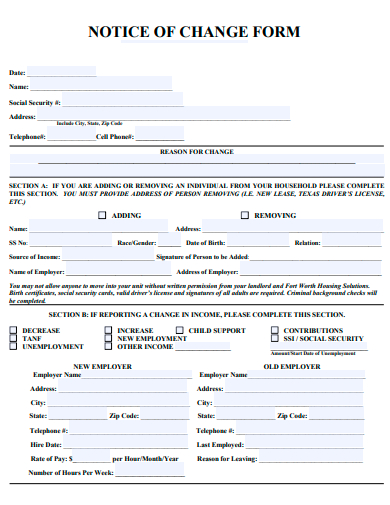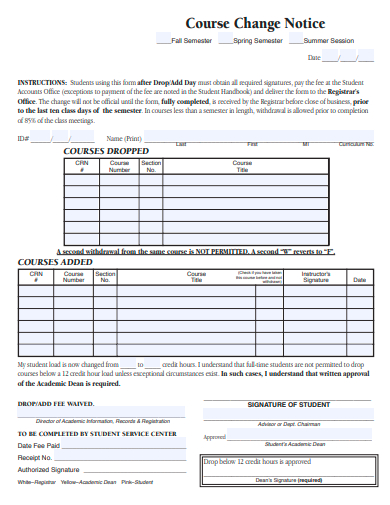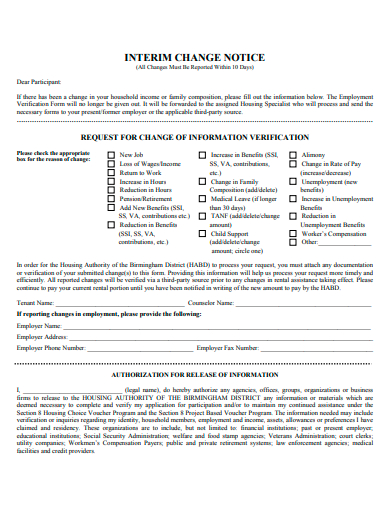The change notice also serves as a record of the change, providing historical record samples of the decision-making process and the reasoning behind the change. This can be useful for future references list and for resolving credit disputes that may arise. The change notice typically includes information such as the reason for the change, the project scope of the change, the impact of the change, and any necessary instructions or guidelines for implementing the change. This information is important for ensuring that the change is understood and implemented correctly.
FREE 10+ Change Notice Samples
1. Change Notice Template
2. Boundary Change Notice
3. Direct Deposit Change Notice
4. Shift Change Notice
5. Change of Address Notice
6. Process Change Notice
7. Interconnection Agreement Change Notice
8. Change of Equipment Notice
9. Change Notice Form
10. Course Change Notice
11. Interim Change Notice
What Is a Change Notice?
A change notice is a document that formally communicates and documents a change to an executive project, agile product, or process flow. It typically includes information such as the reason for the change, the scope of the change, the impact of the change, and any necessary instructions or guidelines for implementing the change. Change notices are used to ensure that all stakeholders are aware of and understand the change and that the change is implemented correctly.
How to Make a Change Notice
In summary, change notices are an essential tool for managing change effectively. They provide a clear communication plan, record keeping, and a form of reference for future use. Here are some steps for creating a change notice:
Step 1: Identify the Change
Clearly define the change that is being made, including the specific project, product, or process that is affected. Determine the reason for the change: Explain the reason for the change, including any problems or issues that are being addressed by the change.
Step 2: Define The Scope
Identify the specific areas of the project, product, or process that are affected by the change, including any related systems or processes. Assess the impact of the change: Evaluate the potential impact of the change on the project, product, or process, including any potential event risks or benefits.
Step 3: Instructions and Timelines
Include detailed instructions for implementing the change, including any necessary steps or procedures that need to be followed. Include a timeline: Provide a timeline for the implementation of the change, including any deadlines or milestones that need to be met.
Step 4: Identify Parties and Review
Assign specific individuals or teams who are responsible for implementing the change and ensure they are aware of their responsibilities. Review and Approval: Review the change notice, get necessary approvals, and distribute it to all relevant stakeholders.
Who should be notified of a change notice?
Change notices should be distributed to all relevant stakeholders, including project managers, team members, and any other individuals or teams that are affected by the change.
How often should change notices be issued?
Change notices should be issued whenever a change is made to a project, product, or process. It is important to communicate changes as soon as possible to minimize disruption and ensure a smooth implementation.
How long should a change notice be?
A change notice should be as long as necessary to provide all the necessary information about the change. However, it should be concise and to the point.
The purpose of a change notice is to formally communicate and document changes to a project, product, or process. It ensures that stakeholders are aware of and understand the changes that are being made and that the change is implemented correctly. A Change Control Board (CCB) is a group of individuals who review and approve changes to a project, product, or process plan. They play an important role in ensuring that changes are well thought-out and that the impact of the change is understood by all stakeholders.
Related Posts
FREE 10+ Notice of Intent to Vacate Samples in PDF
FREE 10+ Notice to Proceed Samples in PDF
FREE 10+ Violation Notice Samples in PDF
FREE 10+ Price Increase Notice Samples in PDF
FREE 10+ Past Due Notice Samples in PDF
FREE 12+ Legal Notice Samples in MS Word | Pages | Google Docs | PDF
FREE 10+ Health Insurance Exchange Notice Samples in PDF | DOC
FREE 10+ Meeting Notice Samples & Templates in Google Docs | MS Word | Apple Pages
FREE 10+ Employee Return to Work Samples in PDF | DOC
FREE 10+ Notice of Return to Work Samples [ Leave, Ability, Intent ]
FREE 9+ Sample Notice Agreement Templates in PDF
FREE 10+ Retail Notice Samples in PDF | MS Word
FREE 12+ Contractor Notice Samples in PDF | MS Word | Excel
FREE Why Is Notice of Copyright Important? [ Importance, Purpose, Elements, Advantages ]
FREE 11+ Rent Notice Samples & Templates in PDF | Google Docs | MS Word | Apple Pages

